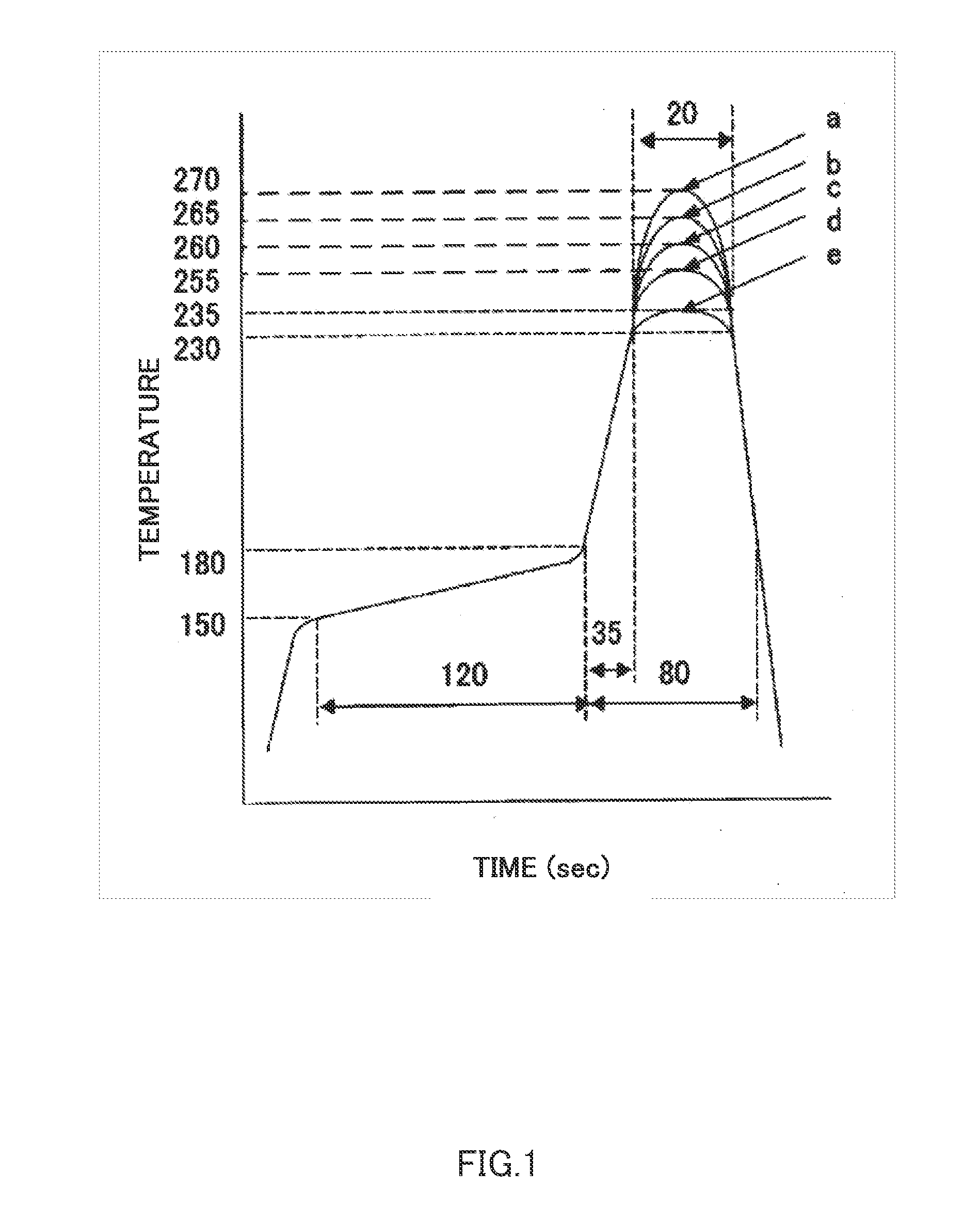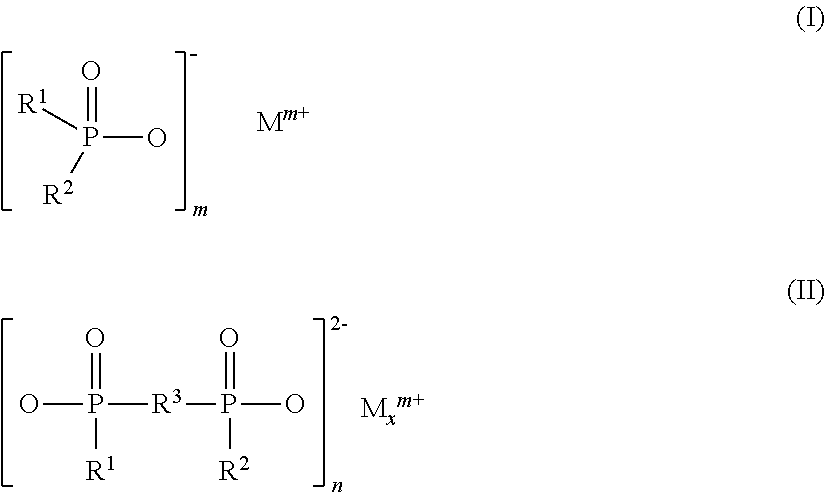Flame-retardant polyamide composition
a flame-retardant polyamide and composition technology, applied in the direction of organic chemistry, group 5/15 element organic compounds, chemistry apparatus and processes, etc., can solve the problems of insufficient corrosive wear reduction of steel members, insufficient flame-retardant performance to meet ul 94 v-0 requirements at smaller thicknesses, and difficult to achieve flame-retardant high enough to meet ul 94 v-0 requirements, etc., to achieve less burden
- Summary
- Abstract
- Description
- Claims
- Application Information
AI Technical Summary
Benefits of technology
Problems solved by technology
Method used
Image
Examples
examples
[0145]Hereinafter, the present invention will be described in detail with reference to Examples, which however shall not be construed as limiting the scope of the invention thereto.
[0146]In Examples and Comparative Examples, measurements and evaluations of parameters are conducted in the manners given below.
[Intrinsic Viscosity [η]]
[0147]Intrinsic viscosity is measured in accordance with JIS K6810-1977. Sample solution is prepared by dissolving 0.5 g of polyamide resin in 50 ml of 96.5% sulfuric acid solution. The flow-down time of the sample solution is measured using a Ubbelohde viscometer at 25±0.05° C.
Intrinsic viscosity [η] is then calculated using the following equation:
[η]=ηSP / [C(1+0.205ηSP)]
[0148]where ηSP is (t−t0) / t0, [η] is intrinsic viscosity (dl / g), ηSP is specific viscosity, C is sample concentration (g / dl), t is sample flow-down time (sec), and t0 is flow-down time (sec) of sulfuric acid (blank).
[0149][Melting Point (Tm)]
[0150]The melting point of the polyamide resin ...
examples 23 to 33
, Comparative Examples 7 to 12, and Reference Example 13
[0209]The above components are mixed in proportions shown in Tables 5 and 6, and the mixtures are fed into a twin-screw vented extruder set to 320° C., and then melt-kneaded to prepare flame-retardant polyamide compositions in the form of pellets. Subsequently, physical properties of the resulting flame-retardant polyamide compositions are evaluated, the results of which are shown in Table 5 (Examples 23 to 33) and Table 6 (Comparative Examples 7 to 12 and Reference Example 13). Zinc oxide (E-2-1) used in Example 32 has an average particle diameter of 0.02 μm and a specific surface area of 37 m2 / g, and zinc oxide (E-2-5) used in Example 32 has an average particle diameter of 15.00 μm and a specific surface area of 2 m2 / g.
TABLE 1Examples12345678Polyamide resin (A)A-148.0548.05A-248.0548.0548.0548.0548.0543.05A-3Thermoplastic resinContent10.0010.0010.0010.0010.0010.0010.0015.00(B):Chlorine content (ppm)900550090055005500550055009...
PUM
| Property | Measurement | Unit |
|---|---|---|
| thickness | aaaaa | aaaaa |
| glass transition temperature | aaaaa | aaaaa |
| particle diameter | aaaaa | aaaaa |
Abstract
Description
Claims
Application Information
 Login to View More
Login to View More - R&D
- Intellectual Property
- Life Sciences
- Materials
- Tech Scout
- Unparalleled Data Quality
- Higher Quality Content
- 60% Fewer Hallucinations
Browse by: Latest US Patents, China's latest patents, Technical Efficacy Thesaurus, Application Domain, Technology Topic, Popular Technical Reports.
© 2025 PatSnap. All rights reserved.Legal|Privacy policy|Modern Slavery Act Transparency Statement|Sitemap|About US| Contact US: help@patsnap.com



